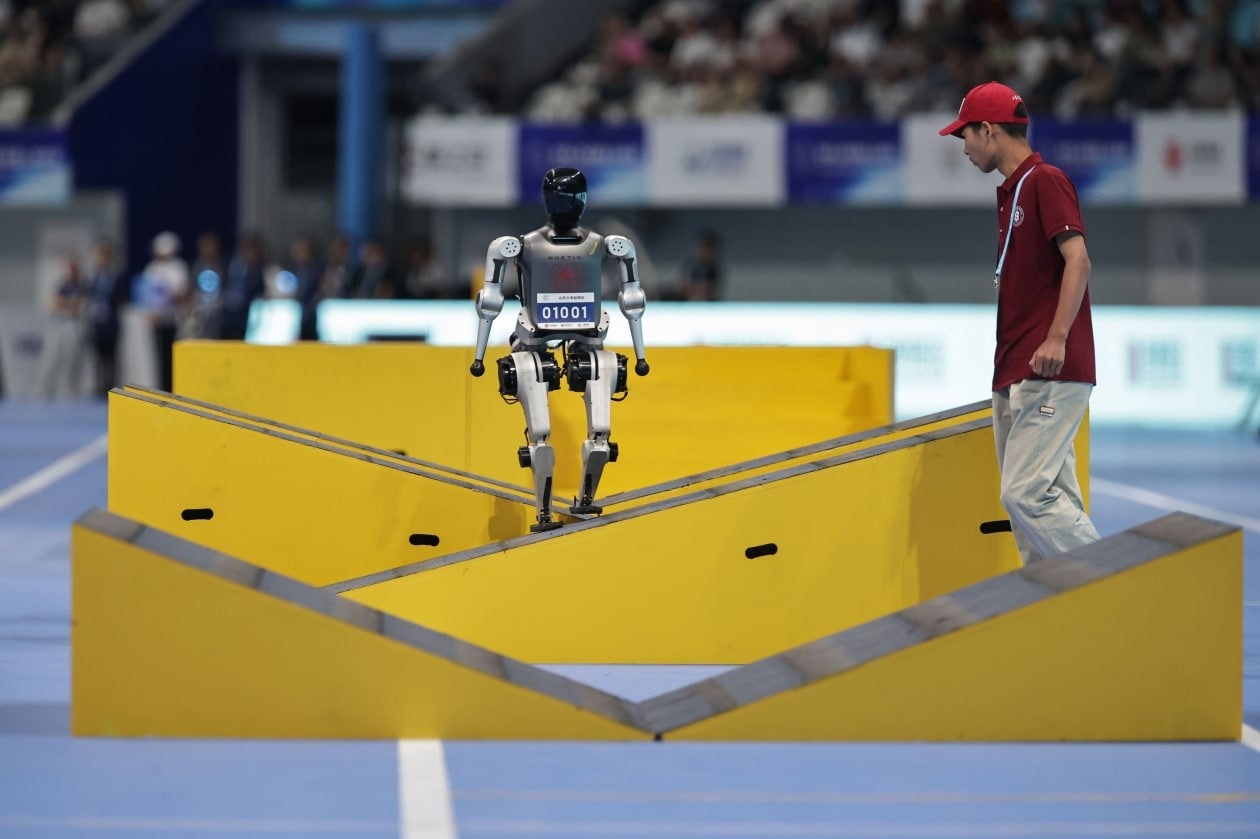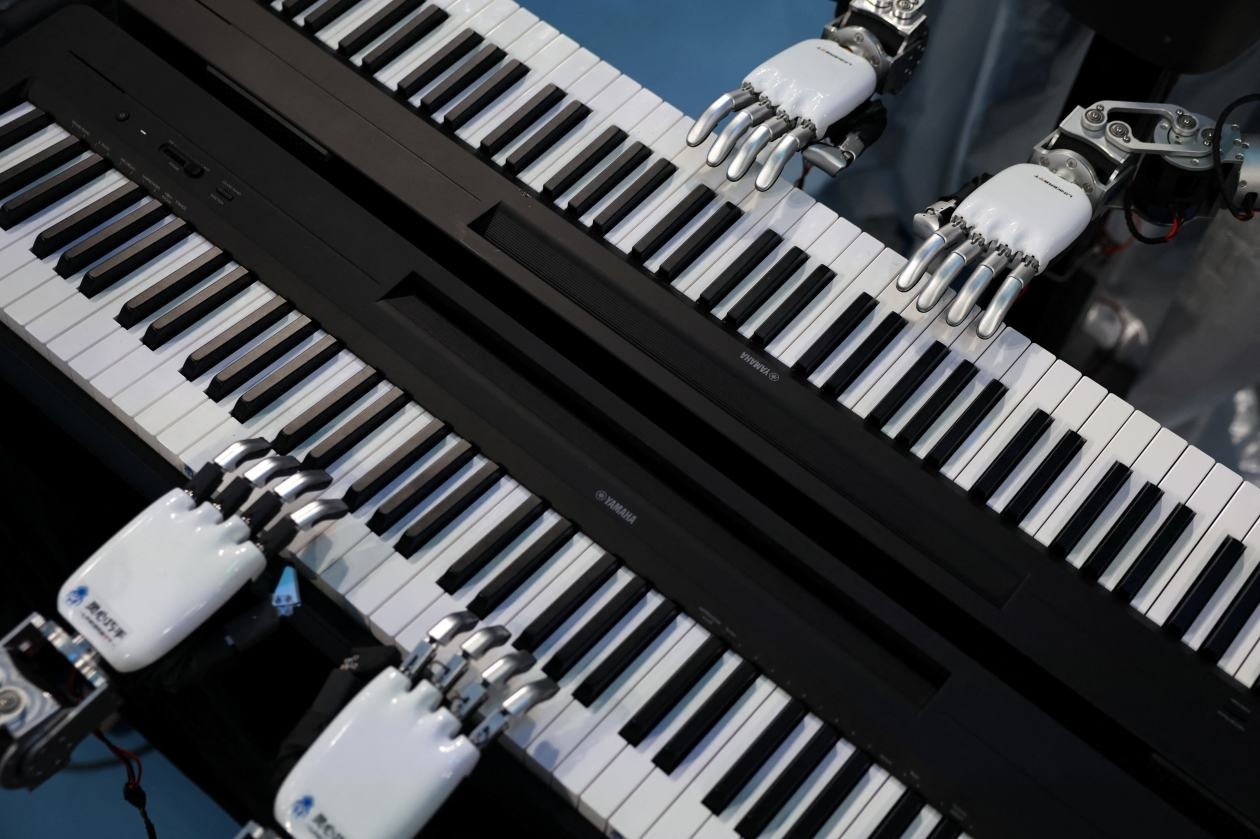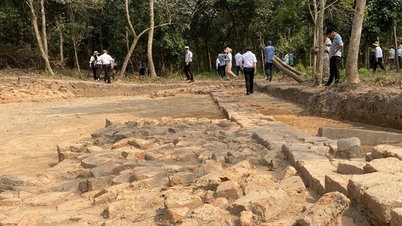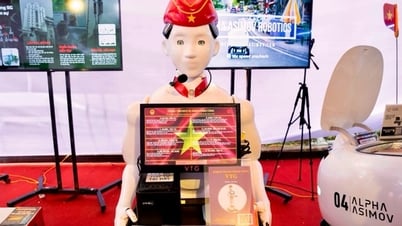The World Humanoid Robot Games 2025, taking place from August 14-17 in Beijing, is considered the Olympics for humanoid robots.
More than 500 robots from 280 teams from 16 countries such as China, the US, Germany, Brazil... gathered to compete in sporting events and perform some familiar tasks such as moving boxes, delivering luggage and cleaning rooms.
Some were very agile and flexible, but most were clumsy and inconsistent, showing that there is still a long way to go between humans and robots in everyday tasks.
Harsh reality
According to WSJ , it took a robot more than 17 minutes to throw away just nine pieces of trash in a simulated hotel room.
In the pharmacy simulation, another robot took nearly 5 minutes to pick up 3 boxes of medicine. In a factory scenario, it took the robot about 2 minutes to place two containers on designated shelves.
“Everything that is easy for humans is a challenge for robots,” said Diana Kleingarn, a PhD student from Germany.
China has said it wants to become the world leader in humanoid robots by 2027. But the event, which has been dubbed the Olympics for humanoid robots, shows that truly useful robots are still years away.
A group of students from Renmin University of China brought a two-armed, wheeled robot made by manufacturer AgileX Robotics to a hotel cleaning event. The robot was controlled by a human team member using a virtual reality headset and controller.
 |
A robot in an obstacle race at the World Humanoid Robot Games 2025. Photo: Shutterstock. |
After two months of training, the robot took more than 12 minutes to complete the challenge. It tried to throw a plastic bag into a trash can but missed. Zhao Yihan, a student on the team, said translating the controller’s movements smoothly to the robot’s arm was a challenge, especially with the choppy signals in the arena.
Another robot trained by the Beijing Institute of General Artificial Intelligence in collaboration with Unitree Robotics, a leading Chinese robot manufacturer, competed in a scenario simulating a hotel receptionist.
The challenge required the robot to use a three-fingered hand to drag a suitcase to a designated door. It moved with small, stomping movements, but sometimes stood still.
“Many of our humanoid robot algorithms are still in the lab demonstration stage,” said Huang Siyuan, a researcher at the institute.
Notable achievements
Despite its shortcomings, China, which is dealing with an aging population and a shrinking workforce, hopes that humanoid robots will soon be able to replace humans in some boring or dangerous jobs.
Also at the event, a wheeled robot from startup UniX AI completed the task of cleaning a room in just 8 minutes and 21 seconds, completely autonomously. Company founder Fred Yang said UniX AI has now deployed hundreds of robots, which start at around $12,000 , in hotels nationwide.
Yang, who decided to put his PhD at Yale on hold to found the startup, said training robots through large AI models led to improvements in their manipulation and perception. “This allows robots to operate in general scenarios,” Yang said.
China has launched a pilot program to accelerate the deployment of robots to ease the pressure on elderly care, as the country grapples with a rapidly aging population and labor shortage, according to SCMP .
 |
A humanoid robot plays the piano before the opening ceremony. Photo: Reuters. |
Specifically, the Ministry of Industry and Information Technology, in coordination with the Ministry of Civil Affairs, issued a notice inviting robot companies and startups across China to participate in the pilot project. This initiative aims to enhance the integration of robots into smart elderly care.
The project outlines three areas of care for older people in home, community and nursing home settings. Applications include assisting people with disabilities or cognitive impairments, providing emotional support, improving health, integrating smart homes and helping with daily activities.
The initiative comes as a growing number of Chinese robot makers – such as Unitree Robotics, UBTech Robotics, Fourier and AgiBot – are investing in developing humanoid robots for home use.
Over the next three years, participating organizations are required to test more than 200 robotic systems in more than 200 homes, or deploy at least 20 units in 20 communities or nursing homes. These companies are also encouraged to develop industry standards and evaluation frameworks.
According to an analysis by the Qianzhan Industry Research Institute, China's elderly care robot market is estimated to be worth around 7.9 billion yuan ( $1.1 billion ) by 2024. The institute also predicts the industry will grow rapidly at a compound annual rate of around 15%, doubling to around 15.9 billion yuan by 2029.
Source: https://znews.vn/robot-hinh-nguoi-van-con-kem-xa-con-nguoi-post1577633.html




































































![[Photo] Party and State leaders visit President Ho Chi Minh's Mausoleum and offer incense to commemorate Heroes and Martyrs](https://vphoto.vietnam.vn/thumb/402x226/vietnam/resource/IMAGE/2025/8/17/ca4f4b61522f4945b3715b12ee1ac46c)






























Comment (0)